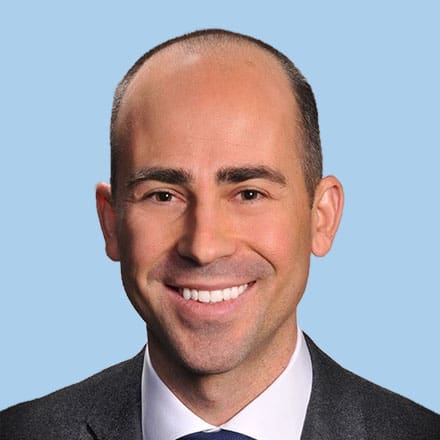Inside Angle
From 3M Health Information Systems
Commodifying medicine: Strengthening the digital health revolution through the patient-physician relationship
“Almost any time we allow the life support systems of our planet or society to be commodified, it drives other breakdowns.” – Tristan Harris
There is a tremendous amount of value that springs from the patient-physician relationship that undergirds proper primary care and much of that is being lost amid the current proliferation of digital health tools. How can the health system simultaneously harness the power of that human connection and the strengths of technology to break down silos for better patient care instead of worsening health care’s fragmentation?
Medicine is an art form expressed by humans who, after more than a decade of education and training, allow patients to speak their story into patterns that can be recognized and addressed by the tactful application of different solutions. The content, combination and sequence of those solutions varies depending on the provider’s sense, the patient’s receptivity and dialogue between the two. The patient-physician interaction is where decades of scientific research, anecdotal evidence passed down from senior practitioners and social circumstances triangulate to alleviate a concern or promote health.
That one-on-one exchange, whether in an exam room or through video, drives the final outcome. The dynamic between patient and caregiver is grounded in a rapport built over minutes or years and, when a physician is entrusted with the complete picture, the most effective care can be deployed.
What are the patient’s values and motivations? What is the confluence of events that brought them to tears on this day? Is there a single underlying condition that may account for this collection of complaints and findings?
A patient-physician relationship has a value that cannot be fully quantified. Continuity of care through changes in weight, jobs, romantic relationships and addiction can alter the trajectory of one person’s health. The benefits of a trusting bond with a physician can be immense: to the individual’s happiness and well-being, to their employer through maintaining or improving productivity through reduced presenteeism or absenteeism, and to society through economic gains.
Unfortunately, there are currently few settings in which this longitudinal relationship between physician and patient is prioritized or substantively incentivized. In fact, many digital health tools are propagating in an attempt to supplant that relationship and commodify medicine. The U.S. healthcare system was already fragmented before the telehealth revolution and now AI-driven chatbots and fully asynchronous apps narrowly focused on issues such as hair loss threaten to turn a manageable 50-piece puzzle into a scattered 1,000-piece nightmare.
Many stakeholders fail to recognize that most clinical diagnoses are not readily established by a single blood test or imaging study. Patterns of symptoms, physical exam finding and laboratory or imaging results are put together by human health workers to determine a diagnosis. The subjective judgments and synthesis of information required to establish many diagnoses cannot be simply replicated by an app compiling a few discrete objective data elements.
“When you commodify education into digital feeds of content, you lose the interrelatedness of human development, trust, care and teacherly authority.” – Tristan Harris, again.
The COVID-19 pandemic has forced health systems to realize what exactly can be accomplished through telehealth. This is a much-needed, decades-delayed evolution of care delivery.
While modalities to improve visit scheduling, patient access and cost transparency were ripe for technology-enabled disruption, the leap to single-issue care provision through an array of apps of varying capabilities has the potential to regress our system by chopping up and separating out primary care essentials to the detriment of quality and cost.
When a patient seeks care at an entity not connected to their primary care physician (PCP), valuable information may not be shared and easy (read cheap) fixes might be missed. Take the 78-year-old patient who seeks care from a telemedicine app for a cough and gets a chest x-ray, antibiotics and steroids. Two days later, he follows up with his PCP and the cough is identified as a side effect of a new medication the PCP began two weeks earlier. Stopping the medication solved the cough, but shared information—or, better, a system that encouraged the patient to see his PCP for a non-urgent issue—could have saved the patient unnecessary potential risk and Medicare (the taxpayer!) unnecessary costs. There are plenty of other examples of telehealth apps working in silo treating with antibiotics, addressing sexually transmitted infections or adding prescriptions for erectile dysfunction, that are not integrated into the patient’s full care picture.
There is also a host of new data insights into outcomes and costs of specific hospitals, specialists, laboratories and imaging centers that many PCPs are unable to access. Surfaced in a timely and user-friendly way, such data could leverage the PCP’s connection to their population to improve efficiency in care delivery. Many primary care offices still lack insight into prescription costs, specialist performance or even simply when their patient lands in the local Emergency Department.
It is impossible for multiple asynchronous transactions to match the interaction between patient and physician and it is similarly challenging for the PCP to act in the best interest of the health system without adequate data at their fingertips. Fortunately, telehealth capabilities have dramatically improved access to care for many patients, especially those in rural or underserved areas. Now we must continue down that road with access to relevant real-time information for their physicians at the point of care.
To realize the incredible value of the digital health revolution, we must organize digital health tools for the care of the patient. To fully capture these benefits, we must cement a foundation of interoperability between these tools and electronic health records. The health system can optimize care delivery by channeling digital health services and health information through an existing relationship with a primary care physician.
Care that is fully responsive to the patient ought to harness health tech and data capabilities and build on continuity of primary care that has been shown to improve outcomes and lower costs worldwide. The pieces of our system would come together to more quickly and powerfully realize the patient-centered care vision through a reorientation towards primary care as the central conduit through which telehealth tools and data meet the patient.
Dr. Travis Bias is a Family Medicine physician and Medical Director of Clinician Solutions at 3M Health Information Systems.


